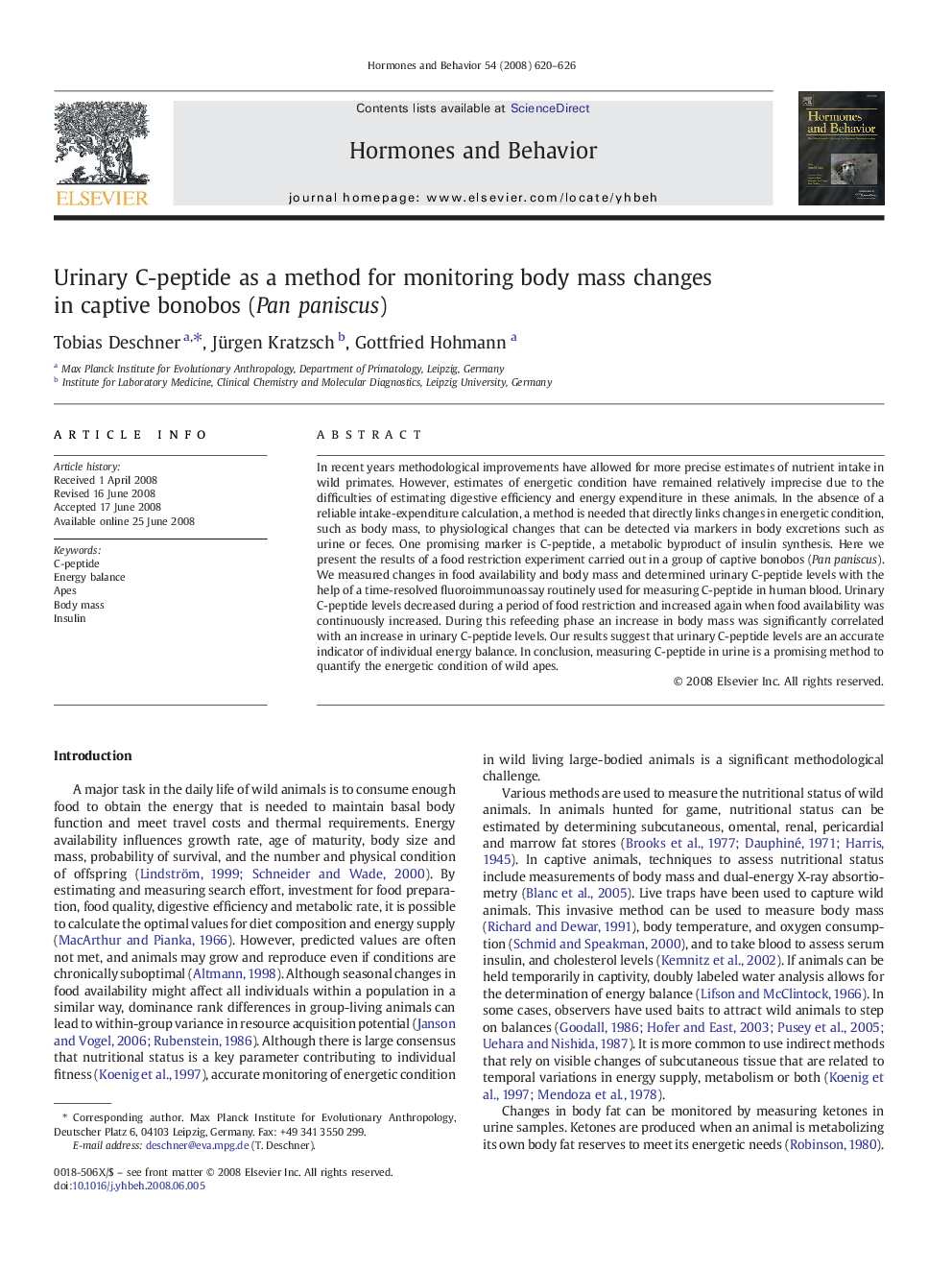| Article ID | Journal | Published Year | Pages | File Type |
|---|---|---|---|---|
| 322855 | Hormones and Behavior | 2008 | 7 Pages |
In recent years methodological improvements have allowed for more precise estimates of nutrient intake in wild primates. However, estimates of energetic condition have remained relatively imprecise due to the difficulties of estimating digestive efficiency and energy expenditure in these animals. In the absence of a reliable intake-expenditure calculation, a method is needed that directly links changes in energetic condition, such as body mass, to physiological changes that can be detected via markers in body excretions such as urine or feces. One promising marker is C-peptide, a metabolic byproduct of insulin synthesis. Here we present the results of a food restriction experiment carried out in a group of captive bonobos (Pan paniscus). We measured changes in food availability and body mass and determined urinary C-peptide levels with the help of a time-resolved fluoroimmunoassay routinely used for measuring C-peptide in human blood. Urinary C-peptide levels decreased during a period of food restriction and increased again when food availability was continuously increased. During this refeeding phase an increase in body mass was significantly correlated with an increase in urinary C-peptide levels. Our results suggest that urinary C-peptide levels are an accurate indicator of individual energy balance. In conclusion, measuring C-peptide in urine is a promising method to quantify the energetic condition of wild apes.
